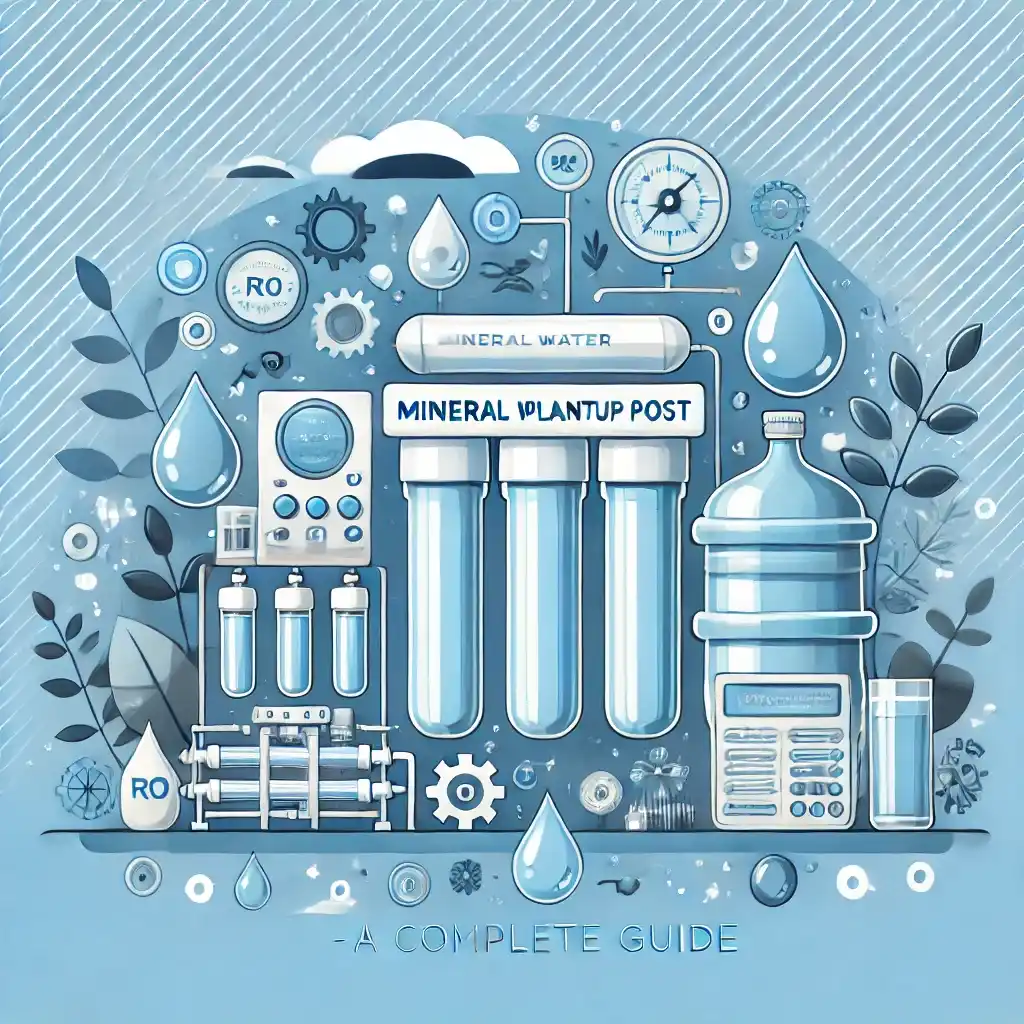

Understanding Mineral Water Plant Setup Cost
Setting up a mineral water plant can be a lucrative business venture, given the growing demand for clean and purified drinking water. However, understanding the setup cost is crucial for planning and ensuring a profitable operation. This blog explores the factors influencing the mineral water plant setup cost, the essential equipment required, and some of the best solutions available in the market.
Factors Influencing Mineral Water Plant Setup Cost
The setup cost of a mineral water plant depends on several factors. Here are the key considerations:
1. Production Capacity
The capacity of the plant determines the volume of water it can process daily. Smaller plants with capacities like 200 LPH (liters per hour) are suitable for local needs, while industrial-scale plants with capacities of 10,000 LPH are designed for large-scale operations.
2. Type of Equipment
The choice of equipment, whether automatic, semi-automatic, or manual, impacts the overall cost. Automatic systems may have a higher upfront cost but offer efficiency and reduced labor expenses in the long run.
3. Water Source and Treatment Requirements
The quality of the raw water source plays a significant role in determining the treatment process. For example, groundwater with high TDS (total dissolved solids) requires advanced filtration systems, increasing the cost.
4. Plant Location
Costs such as land acquisition, construction, and utilities like electricity and water vary by location. Urban areas typically have higher setup costs compared to rural areas.
5. Regulatory Compliance
Obtaining the necessary permits, licenses, and adhering to quality standards also contributes to the setup cost.
Essential Components of a Mineral Water Plant
A mineral water plant setup includes several components:
1. Raw Water Storage Tank
This tank stores untreated water from the source before it enters the filtration process.
2. Water Treatment Unit
The treatment unit is the heart of the plant. It includes systems like Reverse Osmosis (RO), UV sterilization, and ozonation to remove impurities and ensure the water meets drinking standards.
-
Recommended Product: 10,000 LPH Industrial Mineral Water Plant – Ideal for large-scale operations, offering high capacity and robust performance.
3. Mineral Dosing Unit
This unit adds essential minerals back into the water to enhance taste and nutritional value.
4. Storage and Filling Machinery
Once treated, water is stored in tanks and packaged using filling machines. These machines can be automatic or semi-automatic, depending on your budget and production needs.
-
Recommended Product: Blue Hawk Semi-Automatic 500 LPH RO Plant – A cost-effective option for medium-scale operations.
5. Packaging Unit
The packaging unit includes bottle washing, capping, and labeling machinery, which is crucial for branding and marketability.
6. Quality Control and Laboratory Equipment
Ensuring the water meets safety and quality standards requires laboratory testing equipment for regular monitoring.
Cost Breakdown of Setting Up a Mineral Water Plant
The cost of setting up a mineral water plant varies widely depending on the factors discussed earlier. Here’s a rough breakdown:
1. Small-Scale Plant (200-500 LPH)
-
Equipment: $5,000 - $10,000
-
Land and Construction: $2,000 - $5,000
-
Miscellaneous: $1,000 - $2,000
-
Recommended Products:
2. Medium-Scale Plant (1,000-5,000 LPH)
-
Equipment: $15,000 - $30,000
-
Land and Construction: $5,000 - $10,000
-
Miscellaneous: $3,000 - $5,000
-
Recommended Product: Blue Hawk 1,000 LPH Commercial RO Plant
3. Large-Scale Plant (10,000+ LPH)
-
Equipment: $50,000+
-
Land and Construction: $20,000+
-
Miscellaneous: $10,000+
-
Recommended Product: 10,000 LPH Industrial Mineral Water Plant
Additional Considerations
Operational Costs
Beyond the setup costs, operational expenses such as electricity, maintenance, labor, and raw materials (bottles, labels, caps) should be considered. Automation can help reduce some of these expenses.
Market Research and Branding
Investing in market research and a strong branding strategy is essential to stand out in the competitive mineral water market.
Government Subsidies and Loans
Explore government schemes and bank loans that support small and medium enterprises in the water treatment sector.
Conclusion
Setting up a mineral water plant involves careful planning and a clear understanding of the associated costs. By selecting the right equipment and optimizing operational efficiencies, you can establish a successful business. Whether you’re starting small or aiming for industrial-scale production, products like the 10,000 LPH Industrial Mineral Water Plant and 500 LPH RO Plants provide reliable and cost-effective solutions.